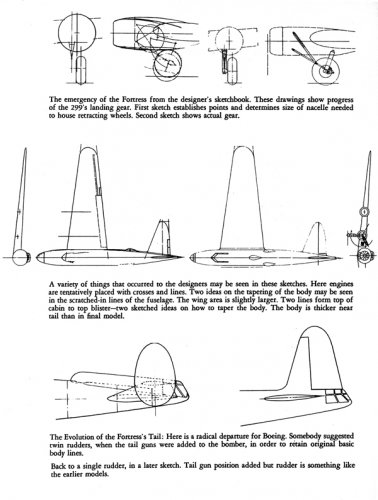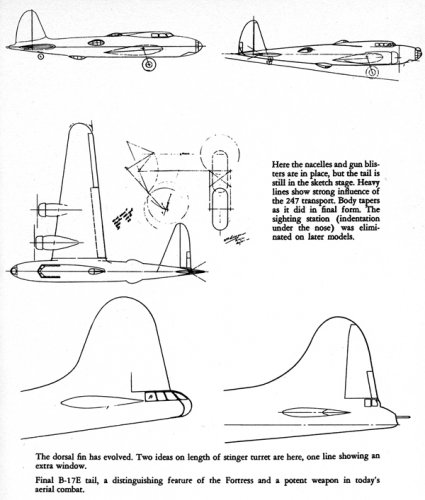- Joined
- 14 June 2006
- Messages
- 2,297
- Reaction score
- 486
Sometimes projects make themselves discovered in very unlikely places. Last Friday I was in Rome at the Italian Air Force historical archives doing research for my book. On the same table there was my friend Paolo Miana looking for infos on the Italian giant bombers of late 20s -early 30s (Caproni, FIAT, Breda... Hesham, maybe we'll know something on the CC3000 one day or another..  ) . He was perusing a pile of old technical reports when he passed me one about a visit made by IAF engineers at Langley in 1937. And there it was, a draught of a Boeing bomber, a pusher version of the B-17. Langley was testing a big model in the tunnel and they gave the Italians the drawing. I've already looked in the NACA online collection of reports to no avail till now. I think this an absolute novelty. ;D Naturally no more data, except that the engines were the same of the first iterations of the B-17 project. Could someone on the forum with access to Boeing archives take a look there ? ???
) . He was perusing a pile of old technical reports when he passed me one about a visit made by IAF engineers at Langley in 1937. And there it was, a draught of a Boeing bomber, a pusher version of the B-17. Langley was testing a big model in the tunnel and they gave the Italians the drawing. I've already looked in the NACA online collection of reports to no avail till now. I think this an absolute novelty. ;D Naturally no more data, except that the engines were the same of the first iterations of the B-17 project. Could someone on the forum with access to Boeing archives take a look there ? ???









